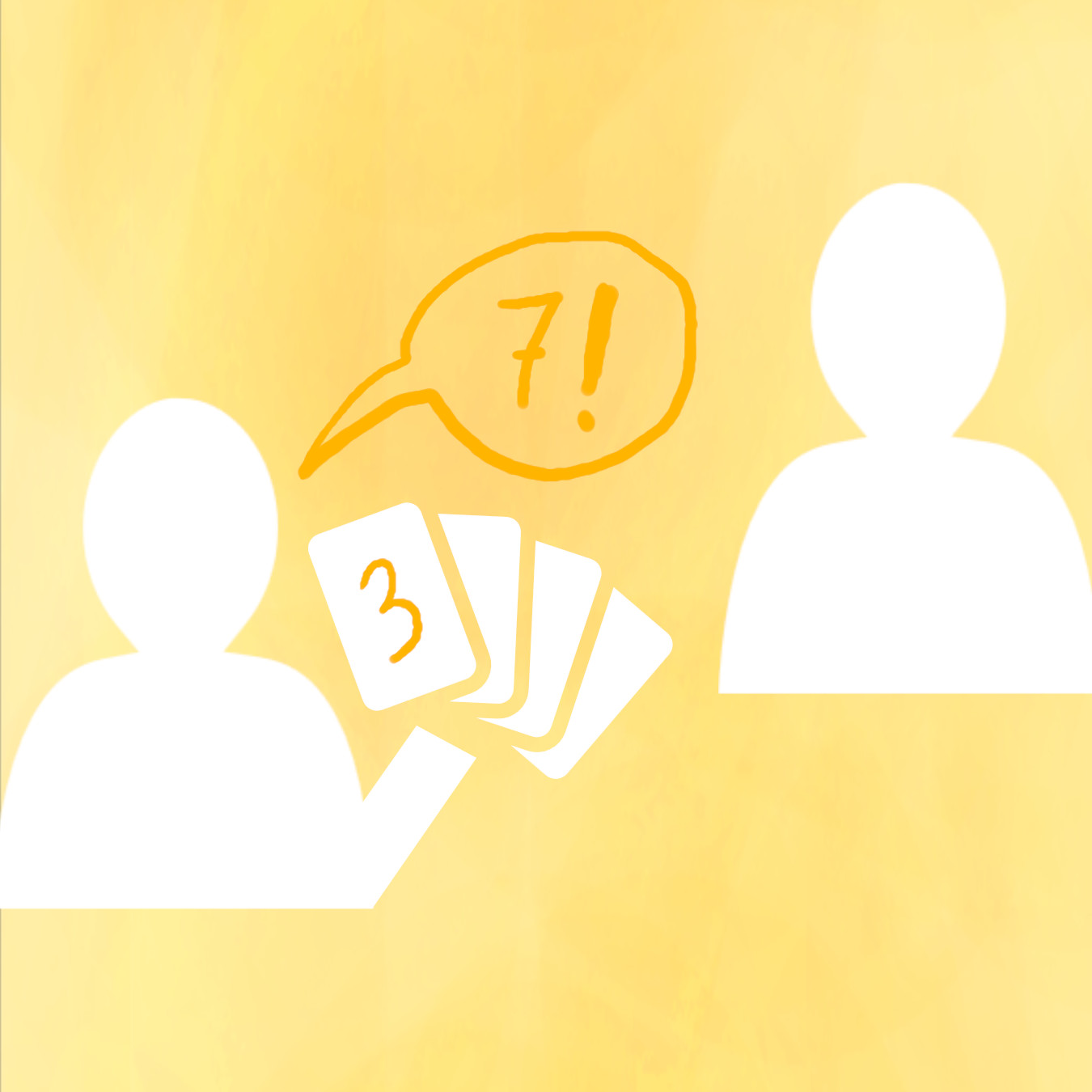
Acting normal is never as hard as it is midway through a bluffing game when the group’s attention is focused on you, and you are suddenly asked what cards you have or why you should be trusted. Whether or not you have cards that you would need to bluff about, you immediately begin wondering what normal looks like, and how to keep a straight face.
Bluffing is a common aspect of many tabletop games, and can usually work its way into nearly any game of any type, since a core element of this mechanic is misdirection, which can come into play whenever players have private cards or secret information.
As you review this article, think about how you have or would like to incorporate bluffing into your game ideas. What thoughts come to mind?

Overview of Bluffing
Bluffing games just about always have some hidden element to them, and involve trying to misdirect other players’ attention away from the actual game plan or goal. The most obvious use of bluffing is in social deduction games (which we will post about next week), but bluffing can, even unintentionally, play a large role in other games.
A good example of this is in Dealer’s Choice, an early Parker Brother’s game that is mainly focused on making money by buying or selling cars. A central mechanic of the game is auctioning cars to the other players, with the catch that each individual car is worth a different amount to each player. In addition, once the seller selects a buyer, the seller may demand any amount of money, which the buyer must pay unless he or she challenges the item’s value to the seller and risks a penalty for being wrong. This combination opens the opportunity for players to bluff about the value of their cards, especially sellers as they confidently demand high prices and leave buyers unsure about whether to pay the demanded amount or challenge the vehicle’s true value.
This is the essence of bluffing. Creative players can work elements of bluffing into nearly any game, but tabletop game designers have a golden opportunity to plan opportunities for bluffing into the default gameplay, inviting players to increase player-to-player interaction in an engaging and positive way.
Important Considerations with Bluffing
If your games have any hidden or secret element, the possibility of bluffing is likely to creep in to some degree; however, designing a game with bluffing as a core mechanic is a great way to plan in exciting and tension-filled opportunities for bluffing. When considering whether bluffing is a good mechanic to include in your game, you might consider the following questions.
If you decide to use bluffing in your games, one good way to go about it is to decide on important game information to know, hide some or most of it with cards and other options, then define in the game instructions good opportunities for players to both bluff about their own information and challenge another player’s bluff. Once you give players examples of both bluffing and calling a bluff, they will move forward with confidence and will find some pretty innovative opportunities to do so.
Cautions and Tips for Using Bluffing
Though they can be both popular and fun, bluffing games certainly aren’t for everyone. If you are designing games with a specific audience in mind, make sure that your players are able to have fun with bluffing without feeling like they need to lie or dishonestly deceive others.
Also, make sure that the bluffing in your games revolves around significant decisions in the game, and has additional costs and benefits to trade off. In both Secret Hitler and Saboteur, the bluffing players have the conflicting and contrasting tradeoff of staying secret versus moving forward their team’s goals and objectives, which makes for some fun situations.
However you design your bluffing game and whatever the theme, try to make sure that you are creating fun situations and encouraging uplifting interactions. I’d like to hear about some of your experiences with bluffing games in the comments!
What are some interesting ways you have seen bluffing be used as a part of a game? How else can bluffing be intentionally used to enhance gameplay? Please comment below and share your thoughts!
Bluffing games just about always have some hidden element to them, and involve trying to misdirect other players’ attention away from the actual game plan or goal. The most obvious use of bluffing is in social deduction games, but bluffing can, even unintentionally, play a large role in other games.

Examples of Games that use [Mechanic]
Please note: Through the Amazon Associates program, we earn from any qualifying purchases.
Other Tabletop Game Mechanics to Explore
- Action Drafting Mechanic
- Alliances Mechanic
- Auctioning Mechanic (Part 1/2)
- Auctioning Mechanic (Part 2/2)
- Bluffing Mechanic
- Board Game Mechanics: An Overview
- Component Drafting Mechanic
- Cooperation Mechanic
- Dice Rolling Mechanic
- Direct Conflict Mechanic
- Elimination Mechanic
- Engine Building Mechanic
- Finance Mechanic
- Irregular Turn Order Mechanic
- Memory Mechanic
- Negotiation Mechanic
- Random Selection
- Social Deduction Mechanic
- Tile Placement Mechanic
- Unique Abilities Mechanic
- Worker Placement Mechanic
Are there other game mechanics or topics that you would like to see explored further? Please comment below with any requests!
